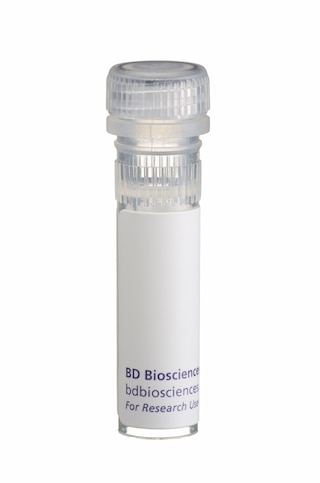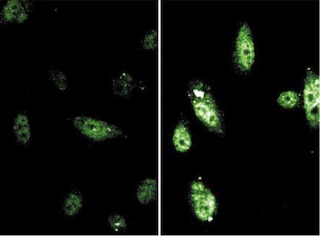-
Reagents
- Flow Cytometry Reagents
-
Western Blotting and Molecular Reagents
- Immunoassay Reagents
-
Single-Cell Multiomics Reagents
- BD® OMICS-Guard Sample Preservation Buffer
- BD® AbSeq Assay
- BD® Single-Cell Multiplexing Kit
- BD Rhapsody™ ATAC-Seq Assays
- BD Rhapsody™ Whole Transcriptome Analysis (WTA) Amplification Kit
- BD Rhapsody™ TCR/BCR Next Multiomic Assays
- BD Rhapsody™ Targeted mRNA Kits
- BD Rhapsody™ Accessory Kits
- BD® OMICS-One Protein Panels
-
Functional Assays
-
Microscopy and Imaging Reagents
-
Cell Preparation and Separation Reagents
-
- BD® OMICS-Guard Sample Preservation Buffer
- BD® AbSeq Assay
- BD® Single-Cell Multiplexing Kit
- BD Rhapsody™ ATAC-Seq Assays
- BD Rhapsody™ Whole Transcriptome Analysis (WTA) Amplification Kit
- BD Rhapsody™ TCR/BCR Next Multiomic Assays
- BD Rhapsody™ Targeted mRNA Kits
- BD Rhapsody™ Accessory Kits
- BD® OMICS-One Protein Panels
- United Kingdom (English)
-
Change country/language
Old Browser
This page has been recently translated and is available in French now.
Looks like you're visiting us from United States.
Would you like to stay on the current country site or be switched to your country?
BD Pharmingen™ Purified Mouse Anti-Mouse Stat6 (pY641)
Clone J71-773.58.11 (RUO)

Western blot analysis of mouse Stat6 (pY641). Lysates from control (left panel) and mouse IL-4 (Cat.No. 550067) treated (right panel) mouse 2E9 T hybridoma were probed with Purified Mouse Anti-Mouse Stat6 (pY641) (Cat. No. 558241) at concentrations of 2.0 (lanes 1), 1.0 (lanes 2), and 0.5 (lanes 3) µg/ml, followed by HRP Goat Anti-Mouse Ig (Cat. No. 550067). Stat6 (pY641) is identified as a band of 97 kDa in the treated lysate.


Western blot analysis of mouse Stat6 (pY641). Lysates from control (left panel) and mouse IL-4 (Cat.No. 550067) treated (right panel) mouse 2E9 T hybridoma were probed with Purified Mouse Anti-Mouse Stat6 (pY641) (Cat. No. 558241) at concentrations of 2.0 (lanes 1), 1.0 (lanes 2), and 0.5 (lanes 3) µg/ml, followed by HRP Goat Anti-Mouse Ig (Cat. No. 550067). Stat6 (pY641) is identified as a band of 97 kDa in the treated lysate.

Western blot analysis of mouse Stat6 (pY641). Lysates from control (left panel) and mouse IL-4 (Cat.No. 550067) treated (right panel) mouse 2E9 T hybridoma were probed with Purified Mouse Anti-Mouse Stat6 (pY641) (Cat. No. 558241) at concentrations of 2.0 (lanes 1), 1.0 (lanes 2), and 0.5 (lanes 3) µg/ml, followed by HRP Goat Anti-Mouse Ig (Cat. No. 550067). Stat6 (pY641) is identified as a band of 97 kDa in the treated lysate.


BD Pharmingen™ Purified Mouse Anti-Mouse Stat6 (pY641)

Regulatory Status Legend
Any use of products other than the permitted use without the express written authorization of Becton, Dickinson and Company is strictly prohibited.
Preparation And Storage
Recommended Assay Procedures
Note: For western blotting of human samples, Purified Mouse Anti-Human Stat6 (Cat. No. 611566) is recommended.
Western blotting protocol: Please refer to the protocols section under "Cell Biology (WB, IP, IHC, IF)" at our website: http://www.bdbiosciences.com/us/s/resources.
Product Notices
- Since applications vary, each investigator should titrate the reagent to obtain optimal results.
- Caution: Sodium azide yields highly toxic hydrazoic acid under acidic conditions. Dilute azide compounds in running water before discarding to avoid accumulation of potentially explosive deposits in plumbing.
- Sodium azide is a reversible inhibitor of oxidative metabolism; therefore, antibody preparations containing this preservative agent must not be used in cell cultures nor injected into animals. Sodium azide may be removed by washing stained cells or plate-bound antibody or dialyzing soluble antibody in sodium azide-free buffer. Since endotoxin may also affect the results of functional studies, we recommend the NA/LE (No Azide/Low Endotoxin) antibody format, if available, for in vitro and in vivo use.
- Please refer to www.bdbiosciences.com/us/s/resources for technical protocols.
Data Sheets
Companion Products



STATs (signal transducers and activators of transcription) are critical mediators of the biologic activity of cytokines including Interleukins (IL) 2-5, IL-7, IL-15, GM-CSF, erythropoietin and growth hormone. Ligand-receptor interaction leads to activation of constitutively associated JAK family kinases and subsequent recruitment/activation of STATs by tyrosine phosphorylation. Active STATs then move to the nucleus to promote transcription of cytokine-inducible genes. Seven STAT proteins have been cloned, each of which is differentially expressed and/or activated in a cytokine-specific and cell type-specific manner. Stat6 plays an important role in signaling pathways that lead to the differentiation of T helper type 2 (Th2) cells from uncommitted CD4 T cell precursors. Moreover, IL-4, secreted by activated T lymphocytes, basophils, and mast cells, induces specific gene expression via the induction of tyrosine phosphorylation of Stat6 at tyrosine 641 (Y641). The SH3:SH2 domain of Stat6 associates with tyrosine-phosphorylated IL-4 receptor and the proximal Jak kinase phosphorylates Stat6 at Y641 on the C-terminal side of the SH2 domain. Stat6 is then released from the receptor, dimerizes, and is thought to contact the basal transcription machinery by binding to p300/CBP. While Stat6 is widely expressed in human tissues, it exhibits elevated expression in peripheral blood lymphocytes, colon, intestine, ovary, prostate, thymus, spleen, kidney, liver, lung, and placenta.
The J71-773.58.11 antibody recognizes mouse Stat6 phosphorylated at Y641.
Development References (7)
-
Bromberg J, Darnell JE. The role of STATs in transcriptional control and their impact on cellular function. Oncogene. 2000; 19(21):2468-2473. (Biology). View Reference
-
Dent AL, Hu-Li J, Paul WE, Staudt LM. T helper type 2 inflammatory disease in the absence of interleukin 4 and transcription factor STAT6. Proc Natl Acad Sci U S A. 1998; 95(23):13823-13828. (Biology). View Reference
-
Hale MB, Krutzik PO, Samra SS, Crane JM, Nolan GP.. Stage Dependent Aberrant Regulation of Cytokine-STAT Signaling in Murine Systemic Lupus Erythematosus. PLoS ONE. 2009; 4(8):e6756. (Clone-specific: Flow cytometry). View Reference
-
Heim MH. The Jak-STAT pathway: specific signal transduction from the cell membrane to the nucleus. Eur J Clin Invest. 1996; 26(1):1-12. (Biology). View Reference
-
Hou J, Schindler U, Henzel WJ, Ho TC, Brasseur M, McKnight SL. An interleukin-4-induced transcription factor: IL-4 Stat. Science. 1994; 265(5179):1701-1706. (Biology).
-
Mikita T, Campbell D, Wu P, Williamson K, Schindler U. Requirements for interleukin-4-induced gene expression and functional characterization of Stat6. Mol Cell Biol. 1996; 16(10):5811-5820. (Biology).
-
Quelle FW, Shimoda K, Thierfelder W, et al. Cloning of murine Stat6 and human Stat6, Stat proteins that are tyrosine phosphorylated in responses to IL-4 and IL-3 but are not required for mitogenesis. Mol Cell Biol. 1995; 15(6):3336-3343. (Biology).
Please refer to Support Documents for Quality Certificates
Global - Refer to manufacturer's instructions for use and related User Manuals and Technical data sheets before using this products as described
Comparisons, where applicable, are made against older BD Technology, manual methods or are general performance claims. Comparisons are not made against non-BD technologies, unless otherwise noted.
For Research Use Only. Not for use in diagnostic or therapeutic procedures.